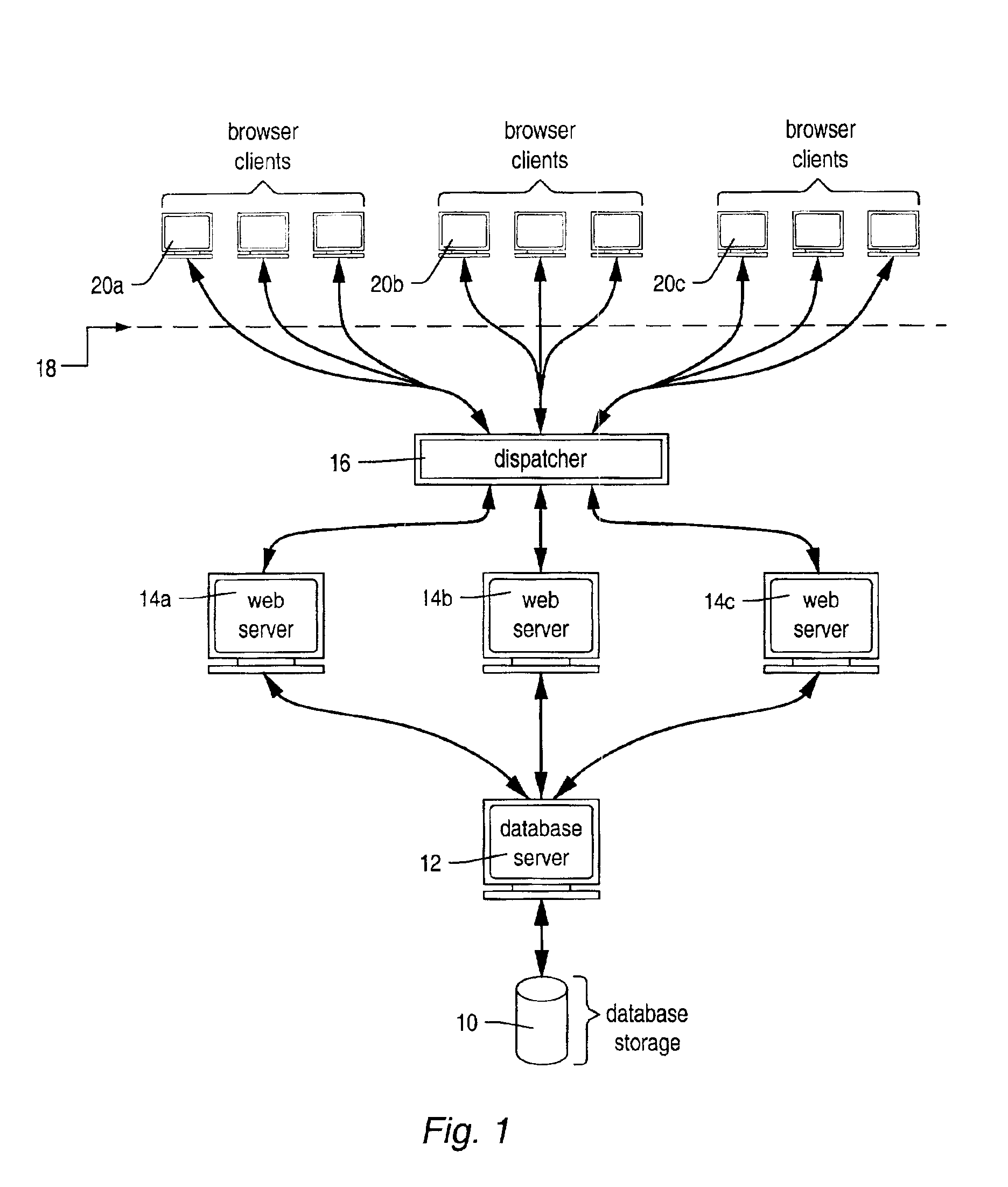Integrated JSP and command cache for web applications with dynamic content
a dynamic content and command cache technology, applied in the field of cache memory, can solve the problems of imposing an inordinate financial burden on the e-business, affecting the responsiveness of the e-commerce website, and affecting the business, so as to shorten the average response time to user requests, improve the responsiveness of the e-commerce website, and avoid costly investment in additional servers
- Summary
- Abstract
- Description
- Claims
- Application Information
AI Technical Summary
Benefits of technology
Problems solved by technology
Method used
Image
Examples
Embodiment Construction
In recent years there has been tremendous growth in Internet traffic. This growth far exceeds the increase in the number of users, and is primarily attributable to the ever-greater dynamic content of modern web pages. E-commerce websites must supply enormous amounts of data requested by Internet shoppers browsing highly interactive web pages. Furthermore, they must do so very efficiently. The shopper should perceive the web page as sufficiently responsive—otherwise, he may direct his browser elsewhere.
An obvious response to the huge growth in Internet traffic would be for the website provider to invest in more web servers and associated hardware. However, this is a very expensive approach. A more cost effective solution is to cache web content that is frequently requested, but infrequently modified; this avoids the need to continually retrieve it from the website database. The majority of online e-business sessions consist of requests for data by the user; it is much less common for...
PUM
 Login to View More
Login to View More Abstract
Description
Claims
Application Information
 Login to View More
Login to View More - R&D Engineer
- R&D Manager
- IP Professional
- Industry Leading Data Capabilities
- Powerful AI technology
- Patent DNA Extraction
Browse by: Latest US Patents, China's latest patents, Technical Efficacy Thesaurus, Application Domain, Technology Topic, Popular Technical Reports.
© 2024 PatSnap. All rights reserved.Legal|Privacy policy|Modern Slavery Act Transparency Statement|Sitemap|About US| Contact US: help@patsnap.com










